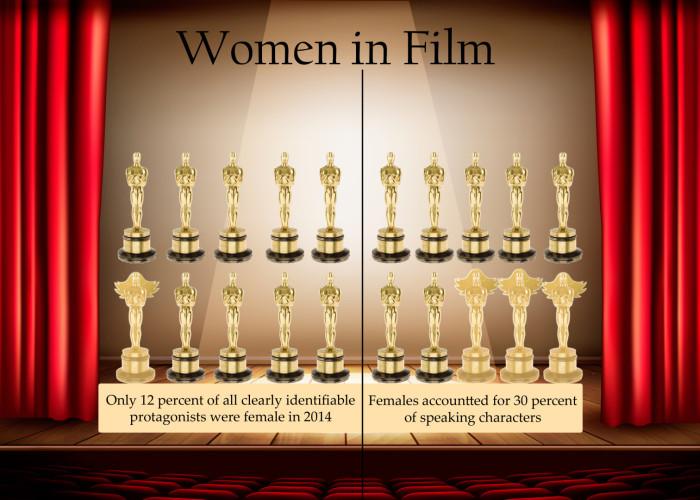Mass Misrepresentation in Oscar Nominations
January 13, 2016
The Academy Awards, or the “Oscars,” is an annual American awards ceremony honoring the year’s cinematic achievements. The ceremony and the award itself are exceedingly prestigious in the film industry and winners are supposedly the best of the best. Still, the best of the best seems to exclude females and people of color.
Last year, all 20 of the acting nominations went to white performers. Although the Oscars is not well-known for its diversity, this is the first time that this has happened since 1998 and is viewed as a major step backwards in film.
Furthermore, in 2015, only 25 out of 127 Oscar nominations went to females. At least all 10 nominees for Best Actress and Supporting Actress went to women. Perhaps even more shocking is the fact that although the Academy Awards were first presented in 1929, the first woman to win Best Director was in 2010, when Kathryn Bigelow won for “The Hurt Locker.”
This lack of diversity is seen throughout Hollywood. According to an UCLA news release, film and television studio heads are more than 90 percent white. Additionally, women are outnumbered two to one in film leads, eight to one in directing and four to one as film writers.
This leads to the massive under-representation and misrepresentation that we see within almost all of the Hollywood entertainment that we consume.
The lack of diversity is seen to what may be the greatest extent in the Academy, which decides Oscar nominees and winners, and is made up of previous Oscar winners. An 2012 Los Angeles Times study found that the Academy is 94 percent Caucasian, 77 percent male and have the median age of 62. This make-up in no way reflects the views of the movie-going public nor that of film-makers. It is almost no wonder why the resulting nominations seem biased.
Film is so often told from a male perspective, where the rare female lead character either focuses her attention on finding love or spends the duration of the film doing everything her male counterpart may do, but in a more sexual manner. This affects viewers negatively in that it confirms misogynistic beliefs found in our society. It does the same to people of color, by confirming racist views.
But it is not a matter of lack of interest. According to Martha Lauzen, a researcher at the Center for the Study of Women in Television and Film at San Diego State University, female film students make up between one third and one half of students at major film schools.
It is a never-ending cycle. The fewer women and people of color there are in positions of authority in the film industry, the less successful others of the same background will be. Humans tend to favor those with similarities in experience, perspective and appearance; however, if all films are made by directors and producers with similar experiences, perspectives and appearances, then the resulting films are either going to be incredibly ignorant or incredibly repetitive.
The females and people of color who do follow through with their dreams and become actors, directors, producers, etc., are almost promised to be disregarded in the industry due to their appearance, or because their perspective is not what Hollywood leaders believe the audience wants.
As an aspiring director, as well as a female, I can say that these statistics are extremely discomforting. Seeing women and minorities achieving in the film industry, or any industry in fact, should never be shocking. This misrepresentation only prevents women and people of color from wanting to join the film industry and share their own perspective with the world.
Nevertheless, be sure to tune in Feb. 28 to see how many more middle-aged white males are awarded for being the best of the best in the film industry.




